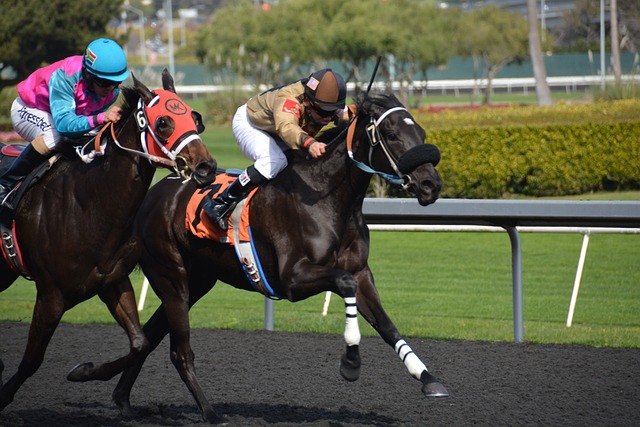Most bettors track their wins and losses, but few truly understand whether they’re profitable in the long run. It’s easy to get fooled by short-term success — a few lucky wins can look impressive until the math catches up. That’s why serious bettors use Return on Investment (ROI) to measure real performance.
ROI isn’t just a financial buzzword. It’s a precise way to evaluate how efficiently you turn your bankroll into profit (or loss) over time. In this post, you’ll learn what betting ROI means, how to calculate it correctly, and how to use it to improve your strategy.
What Is ROI in Betting?
ROI (Return on Investment) shows the percentage of profit you make compared to the total amount you’ve wagered. It answers the question: “For every dollar I bet, how much am I getting back?”
In gambling, ROI focuses on long-term results, not single bets. For example, a 10% ROI means that for every $100 wagered, you earn $10 profit on average. A negative ROI indicates a loss over time.
The formula is straightforward:ROI=Total ProfitTotal Amount Wagered×100ROI=Total Amount WageredTotal Profit×100
Where:
- Total Profit = Total Winnings – Total Amount Wagered
- Total Amount Wagered = Sum of all bets placed, including losses
This formula helps filter out emotional highs and lows, showing your true performance as a bettor.
Step-by-Step: How to Calculate Betting ROI
Let’s break down the process with an example.
1. Track Your Bets
Keep a record of every wager — amount, odds, result, and profit or loss. A spreadsheet works fine, but betting trackers or apps can automate the process.
Example bet log:
| Bet # | Wager | Odds (Decimal) | Result | Profit/Loss |
|---|---|---|---|---|
| 1 | $20 | 2.50 | Win | +$30 |
| 2 | $15 | 1.80 | Loss | -$15 |
| 3 | $25 | 3.00 | Win | +$50 |
| 4 | $20 | 1.60 | Loss | -$20 |
2. Add Up the Totals
- Total Amount Wagered: $20 + $15 + $25 + $20 = $80
- Total Profit: ($30 + $50) – ($15 + $20) = $45
3. Apply the ROI Formula
ROI=4580×100=56.25%ROI=8045×100=56.25%
This means your true return is 56.25% — a very strong performance in betting terms.
Why ROI Matters More Than Win Rate

A common mistake among beginners is focusing on win rate — the percentage of bets you win. But win rate alone doesn’t show profitability.
Consider two bettors:
| Bettor | Win Rate | Average Odds | ROI |
|---|---|---|---|
| A | 70% | 1.50 | +5% |
| B | 40% | 3.00 | +15% |
Bettor A wins more often, but Bettor B earns a higher ROI because their wins come at better odds. The lesson: ROI measures efficiency, not luck.
Understanding Short-Term Variance
ROI isn’t static — it fluctuates, especially over small sample sizes. In the short term, streaks can distort your numbers. The more bets you track, the clearer your true ROI becomes.
Rules of thumb:
- Under 50 bets: Too early to judge — variance dominates results.
- 50–200 bets: Initial trends begin to appear.
- 200+ bets: ROI starts to reflect actual skill and consistency.
Patience and data collection are critical.
How to Improve Your ROI
Once you know your baseline ROI, you can focus on improving it systematically.
1. Focus on Value Bets
A value bet occurs when your estimated probability of winning is higher than the bookmaker’s implied odds. Consistently finding value bets, even with modest odds, increases ROI over time.
2. Control Your Stakes
Avoid overbetting. Risking too much on a single event can destroy long-term ROI. A common rule is to stake 1–2% of your total bankroll per bet.
3. Compare Odds Across Bookmakers
Different bookmakers offer slightly different lines. Consistently betting at the best odds available can raise ROI by several percentage points annually.
4. Analyze Losses
Look for patterns — do you lose more in certain markets or odds ranges? Tightening focus to your strongest areas helps cut negative ROI segments.
5. Track and Adjust Regularly
Recalculate ROI every 50–100 bets. This keeps you aware of trends and prevents false confidence after short-term hot streaks.
Common Pitfalls When Measuring ROI

Many bettors miscalculate ROI by:
- Ignoring total stake size: Counting only winning bets distorts results.
- Using net profit instead of total volume: ROI depends on how much you risk, not just what you gain.
- Mixing currencies or bonuses: Keep all numbers consistent and exclude free bets from ROI to avoid inflated results.
Accurate tracking means honest results — and honest results lead to better strategies.
Why ROI Defines Long-Term Success
Every professional bettor uses ROI as a compass. It cuts through emotional wins, lucky runs, and hype, showing whether your strategy truly works. Even a small positive ROI — say 3–5% — is impressive over hundreds of bets.
If you treat gambling as a business, ROI is your performance report. It reveals how efficiently you’re turning knowledge into profit.
The numbers never lie — and in betting, understanding them is the difference between entertainment and expertise.
